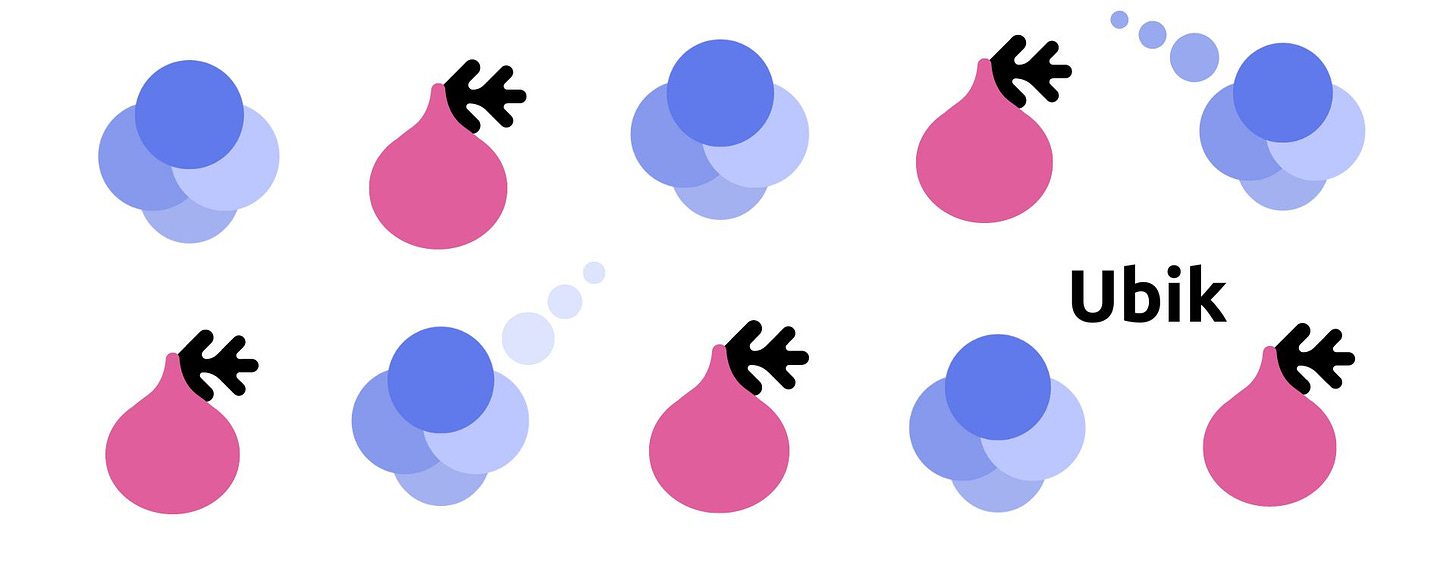- Published on
How is NYC's Climate Changing?
Welcome to the Ubik Blog!
If you haven’t already subscribed, subscribe here!
2007 in NYC
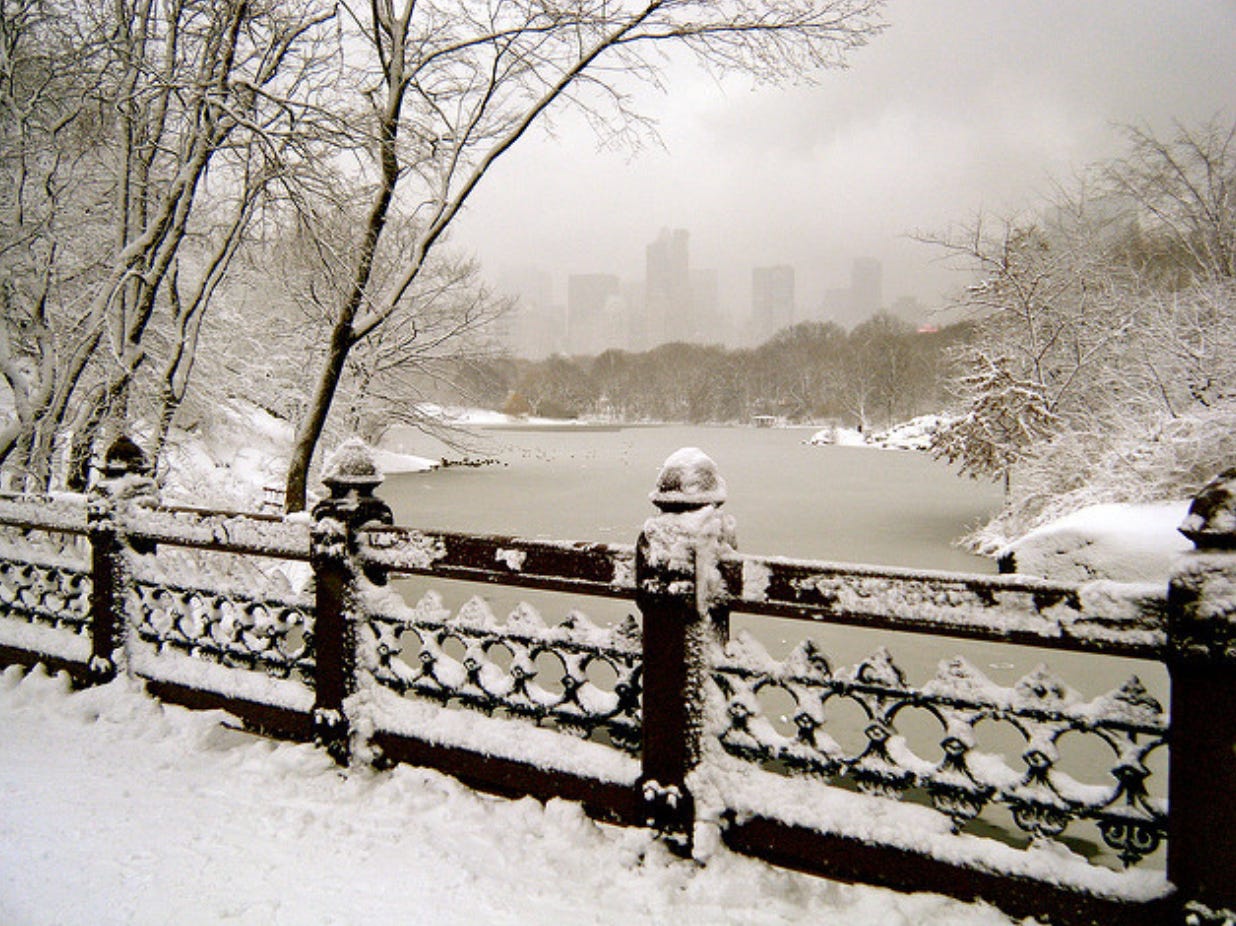 Photograph: Courtesy CC/Flickr/ sackerman519
Photograph: Courtesy CC/Flickr/ sackerman519
I remember the winters of my Brooklyn childhood. Snow fell for days on end—a blizzard resulting in days off school and sledding at cherry hill in Prospect Park. The snow was aggressive, the winds were strong, and the snow under my seven-year-old feet was seemingly endless. White everywhere. My field of view decreased from the pounding snow, and it felt like turning my render distance down in Minecraft. I was an explorer. Dragging my sled to the park with the cold wind hurting my face, I was nothing but smiles and snot.
Almost two decades later, snow has become something to hope for. Warm winters and flooded summers leave me feeling confused after my youth in the cold. Today, I'm writing this on February 9, 2024; it is 50 degrees Fahrenheit, and families stroll around Brooklyn like a Friday in Spring. What does this new, pleasant climate resemble? How did we get to these comfortable winters and miserable summers? How is our climate changing?
What is the Anthropocene?
The Anthropocene is a name scientists use for when humans have significantly impacted Earth's climate and environment. This era is known for rapid industrial growth, extensive deforestation, and releasing gases that warm the planet. In New York City, these effects are changing weather patterns and rising sea levels, altering the city's appearance and people's lives.
Warmer Winters
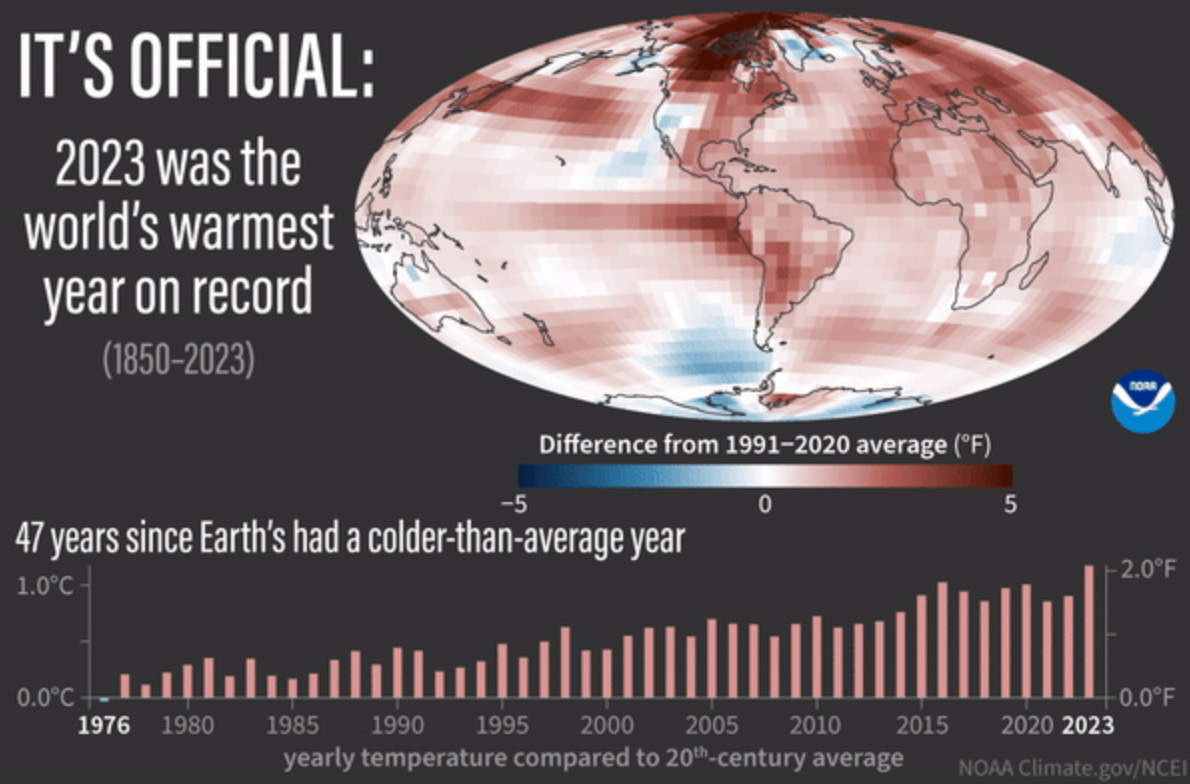 (Image credit: NOAA Climate.gov, using NOAA NCEI data)
(Image credit: NOAA Climate.gov, using NOAA NCEI data)
The winter season in NYC is different from what it used to be. Average temperatures during the winter months have steadily risen, leading to fewer days with snowfall and more days with temperatures above historical norms. The Department of Environmental Conservation says winter temperatures have risen 3 degrees Fahrenheit over the last century. Winter has experienced the most significant changes in average temperature over the past century compared to the other seasons.
Of course, 60-degree days in February feel nice, but what do they mean for our climate?
Snow in NYC used to be magical. With snow days full of sledding at suicide hill or snowball fights in Prospect Park, we could always count on winter for days full of adventure and exploration. Today, snow has become a mystery. Heavy snowfall is a rare occasion many hope to see. 2 inches on the sidewalk and remote learning isn't what snow days should be. 2023 was officially the "warmest winter on record" (National Oceanic and Atmospheric Administration, 2024), meaning snow fell less, and winter in NYC felt more unsettling.
Extreme Heat
NYC is experiencing more frequent and intense heatwaves, a direct consequence of climate change. The city's infrastructure, built for a different climate era, struggles to cope with the soaring temperatures. The urban heat island effect exacerbates the heat, with concrete and asphalt absorbing and re-radiating the sun's warmth (Environmental Protection Agency, 2024). Extreme heat poses health risks, particularly for vulnerable populations, and highlights how heat risk and class are intertwined.
"Each summer, on average, an estimated 350 New Yorkers die prematurely because of hot weather in New York City (NYC)" (Environment & Health Data Portal, n.d.)
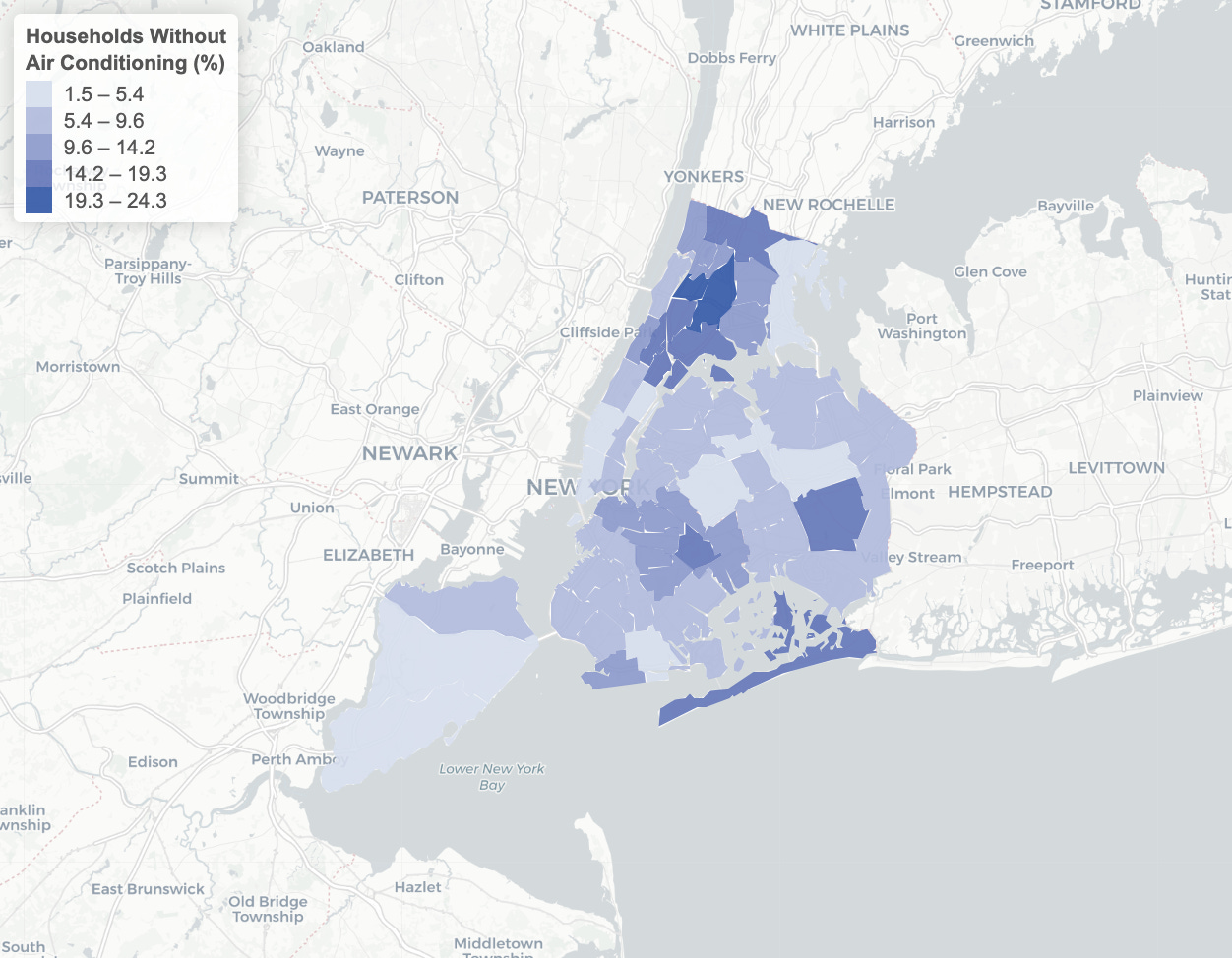 Map of air conditioning inequity in NYC (https://council.nyc.gov/data/heat/)
Map of air conditioning inequity in NYC (https://council.nyc.gov/data/heat/)
Poor communities and POC are more likely to die in heat waves in NYC (Environment & Health Data Portal, n.d.). Due to a lack of accessible cooling, like public air-conditioned areas or air conditioning in the home, these communities feel the heat more than others, "more Americans die from heat waves every year than from all other extreme weather events combined" (Data Team, New York City Council, n.d.). These are often preventable deaths. Access to cold spaces is vital to minimizing health risks and fatalities as cities heat up.
Flooding
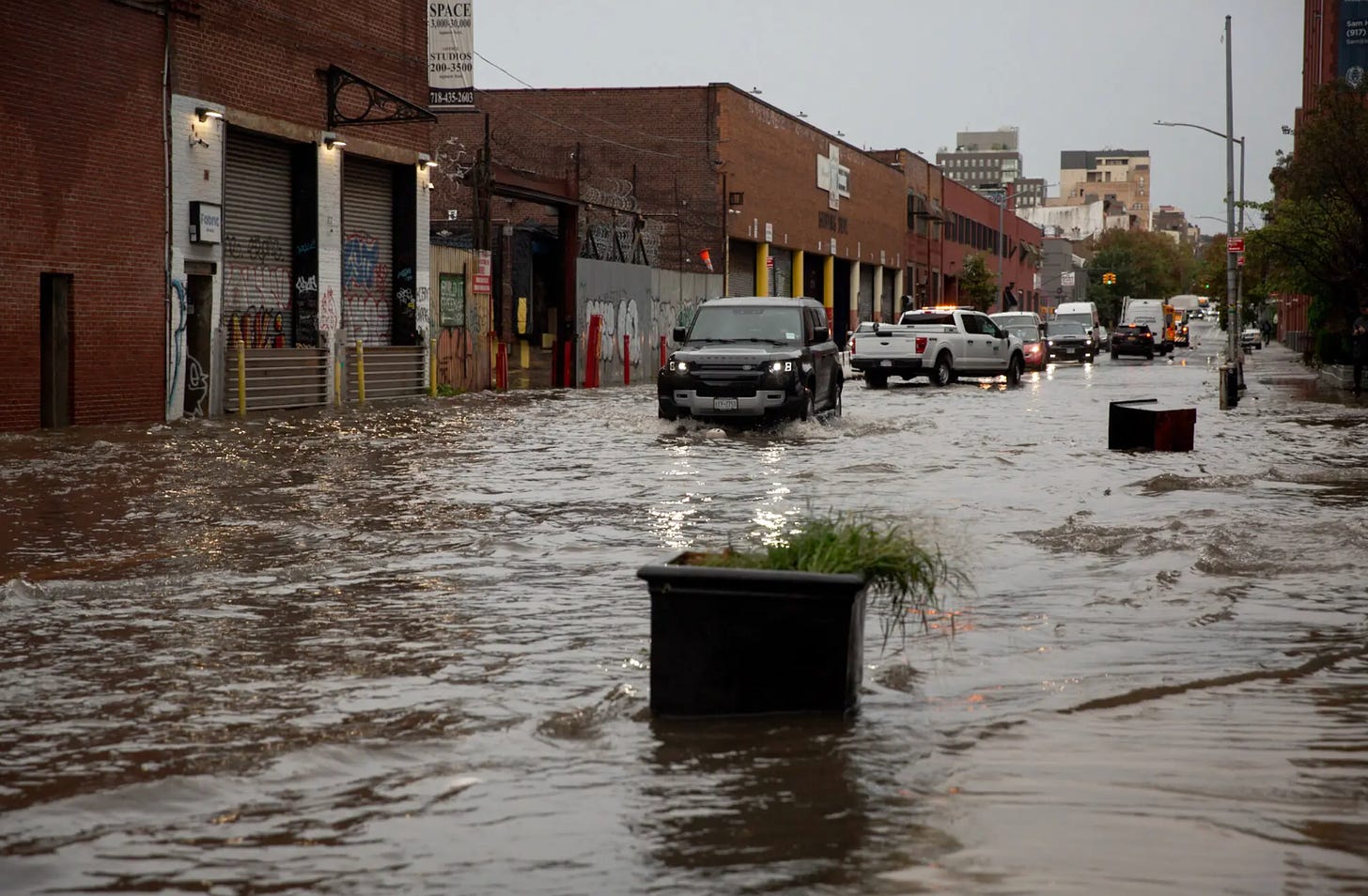 Flooding near the Gowanus Canal Sept 2023, Anna Watts for The New York Times
Flooding near the Gowanus Canal Sept 2023, Anna Watts for The New York Times
Flooding became an expected fear only after Hurricane Sandy, an unexpected hurricane that destroyed many parts of the coastline and flooded low-lying neighborhoods. Flooding has become the most expensive and regular natural disaster in the US and NYC. Every year, during the Atlantic Hurricane Season, NYC can expect multiple tropical storms, often resulting in millions of dollars in damage. Today, NYC sees around ten days of coastal flooding, but a new study by the New York State Energy Research and Development Authority shows that by 2040, we could see this number jump from 10 to 60-85 days a year.
The report done by the NYSERDA also shows that by mid-century, NYC will have much more rain and, in turn, flooding. Urban flooding is a unique kind of flooding. Due to poor city planning, some neighborhoods are classified as "low-lying," meaning geographically, these neighborhoods are below sea level or other parts of the city. Heavy rain means water pools in heavy rain storms, resulting in unexpected flash flooding. With Hurricane Ida in 2021 and the September floods of 2023, New Yorkers experienced two devastating floods within two years, serving as a wake-up call that we should expect deadly floods instead of magical snowstorms.
What Should We Do?
Different communities in NYC feel the impacts of climate change in various ways. Low-income communities and communities of color often bear the brunt of extreme weather events due to factors like inadequate housing, limited access to air conditioning or overheating, and proximity to flood-prone areas. Elderly residents and those with pre-existing health conditions are also at heightened risk during heat waves and floods.
Addressing the social and economic disparities is crucial for building a resilient and equitable city in the face of climate change. Projects like FloodNet, sensors designed to track how much water is pooling in low-lying neighborhoods, or Access NYC, a program designed to help those without air conditioning in heat-risk situations, are a first step in the right direction. Year by year, we watch NYC's climate change, and progressively, the changes become more apparent and fatal.
Work Cited
Environment & Health Data Portal. (n.d.). Annual report on heat mortality in NYC. Retrieved February 15, 2024, from https://a816-dohbesp.nyc.gov/IndicatorPublic/key-topics/climatehealth/heat-report/.
Data Team, New York City Council. (n.d.). Heat and cooling equity. Retrieved February 15, 2024, from https://council.nyc.gov/data/heat/.
Department of Environmental Conservation. (n.d.). Climate Change Effects and Impacts. Retrieved February 14, 2024, from https://www.dec.ny.gov/environmental-protection/climate-change/effects-impacts#:~:text=Over%20the%20last%20century%2C%20average,three%20times%20faster%20than%20summers.
Environmental Protection Agency. (2024, January 29). Heat island effect. https://www.epa.gov/heatislands
National Oceanic and Atmospheric Administration. (2024, January 12). 2023 was the world's warmest year on record by far. https://www.noaa.gov/news/2023-was-worlds-warmest-year-on-record-by-far
New York State Energy Research and Development Authority. (n.d.). Coastal New York future floodplain mapper. Retrieved February 15, 2024, from https://services.nyserda.ny.gov/SLR_Viewer/About.
Check out our AI Education tools here:
Fiig.ai by Ubik
Fiig.ai from Ubik Studio is an academic tool that helps humans collaborate with AI to understand research without sacrificing learning. At Ubik, we aim to create ethical AI tools that impact positively.
Join us
After making an account at fiig.ai, users can:
SEARCH peer-reviewed journals
Get help using AI studies findings to PLAN projects
COLLABORATE with AI to finalize reports (with citations)
Subscribe
